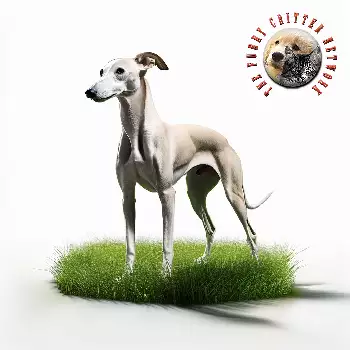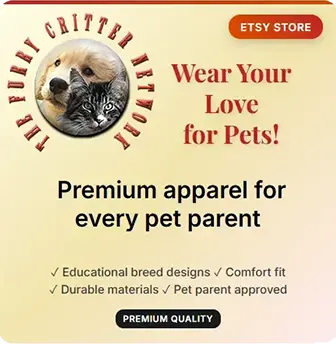The history of the Miniature Greyhound spans over two millennia, making it one of the most ancient companion breeds in continuous existence. Archaeological evidence suggests that small sighthounds very similar to the modern Miniature Greyhound existed in ancient Egypt and the Mediterranean region as early as 2,000 years ago. These early ancestors appear in Roman art, mosaics, and sculpture, indicating their high status in ancient society.
The breed's development is intrinsically linked to the Italian peninsula, where it flourished under the patronage of Italian nobility during the Renaissance period. During the 5th century BCE, these small sighthounds arrived in Italy, possibly through trade routes with Egypt and Greece. The Romans, known for their appreciation of fine breeding and elegant art, further refined the breed, establishing the foundational characteristics that remain today.
Throughout the Medieval period and into the Renaissance, the Miniature Greyhound became a symbol of aristocratic refinement. Italian nobles, including members of the powerful D'Este, Medici, and Visconti families, kept these dogs as treasured companions. The breed's presence in the courts of these influential families not only ensured their survival but also their continued refinement through selective breeding programs that emphasized elegance, temperament, and companionability.
The breed's popularity spread throughout European royal courts during the 15th and 16th centuries. Notable historical figures who owned Miniature Greyhounds included Frederick II, Duke of Swabia, and various French kings including Louis XI, Charles VIII, Charles IX, Louis XIII, and Louis XIV. The breed also found favor with other European monarchs such as Frederick the Great of Prussia, Anne of Denmark, and Catherine the Great of Russia. Queen Victoria herself was known to keep these elegant companions.
Artists throughout history have been captivated by the breed's graceful lines and aristocratic bearing. Master painters including Giotto, Sassetta, and Tiepolo featured Miniature Greyhounds in their works, often as symbols of loyalty, refinement, and noble status. These artistic representations provide valuable historical documentation of the breed's appearance and its role in aristocratic society. A notable Roman statue from the second century, now housed in the Vatican Museums, depicts a dog virtually identical to the modern Miniature Greyhound.
The first half of the 19th century marked the breed's introduction to the United Kingdom, where they were immediately recognized as "Italian Greyhounds." The first volume of The Kennel Club Calendar and Stud Book, published in 1874, listed forty of these dogs, indicating their rapid acceptance in British dog fancy. The Italian Greyhound Club was established in Britain in 1900, providing formal structure for breed development and preservation.
Recognition by the American Kennel Club began remarkably early, with registrations starting in 1886, making the Miniature Greyhound the 30th breed recognized by the AKC. This early recognition in America helped establish breeding programs that would prove crucial to the breed's survival during the challenging years of the World Wars.
The development of the modern Piccolo Levriero Italiano in its homeland began in earnest during the late 19th century. The first documented dog shows featuring the breed occurred in 1901 in Milan and Novara, with six dogs exhibited. Additional shows followed in Turin (1902) with two dogs, and Udine (1903) with one dog, indicating the breed's slow but steady development in its native Italy.
World War I and World War II presented significant challenges to the breed's survival. The devastation in Europe, particularly in Italy, brought the Miniature Greyhound close to extinction. Many breeding programs were disrupted, and food shortages made it difficult to maintain dog populations. However, dedicated breeders, particularly Emilio Cavallini and Giulia Ajò Montecuccoli degli Erri, worked tirelessly during the post-World War I period to rebuild the breed.
The period between the wars saw international cooperation in breeding programs, with Italian breeders importing dogs from Germany and France to strengthen genetic diversity. Of the forty-five dogs registered by the Kennel Club Italiano in 1926-1927, twenty-eight were born in Italy while seventeen were imported, demonstrating the international effort to preserve the breed.
The post-World War II recovery was equally challenging, with breed numbers beginning to recover only in the 1950s. A pivotal moment came in 1951 when Maria Luisa Incontri Lotteringhi della Stufa imported the influential bitch Komtesse von Gastuna from Austria. This single dog had an enormous impact on breed recovery and genetic diversity, with many modern Miniature Greyhounds tracing their lineage to this important foundation animal.
The Fédération Cynologique Internationale granted definitive acceptance to the breed in October 1956, providing international standardization and recognition. In November of the same year, the Circolo del Levriero Italiano was formed under the auspices of the Ente Nazionale della Cinofilia Italiana, later renamed the Circolo del Piccolo Levriero Italiano, providing dedicated breed advocacy and preservation efforts in Italy.
Modern breeding records from the Ente Nazionale della Cinofilia Italiana show steady registration numbers from 2011 to 2019, with a total of 2,557 new registrations during this nine-year period. Annual registrations ranged from a minimum of 213 to a maximum of 333 per year, indicating a stable but carefully managed population that ensures genetic diversity while meeting demand for these elegant companions.
Today's Miniature Greyhound represents the culmination of over two thousand years of selective breeding that has preserved the essential characteristics valued by ancient nobility while adapting to modern companion dog roles. The breed continues to embody the elegance, grace, and refined temperament that made it a favorite of kings and artists, while proving equally suited to contemporary family life when provided with appropriate care and understanding of their unique needs.

